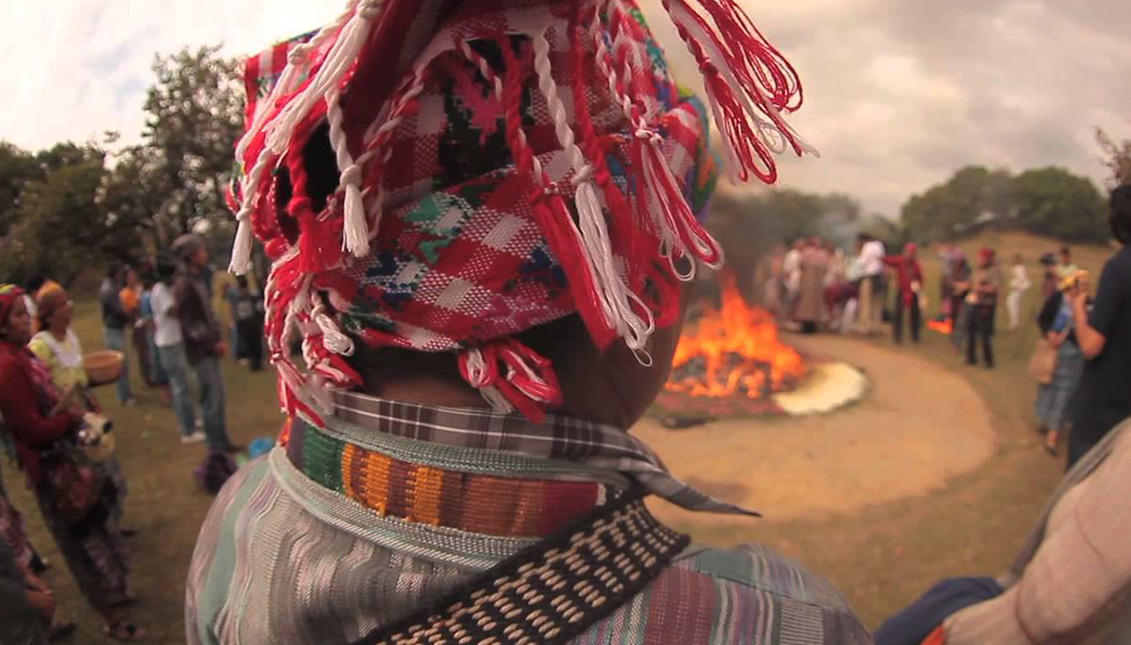
If you want to know when the world will end, ask a Mayan
He may answer, "In none of our 20 calendars was such a thing said," at least that's what Guatemalan magician and businessman Alexander Goz claims.
His skin is rather pale, his hair is blond and he has green eyes, and is called "Goz," short for "González." But this Guatemalan magician and businessman who is dedicated to giving voice in social media to other practitioners of magic defines himself for all intents and purposes as a descendant of the Mayans.
"I don't live in the original Mayan territory, but it's my worldview and my identity," he told fellow magician Sére Skuld during a talk attended by some 50 people through Instagram.
Since the beginning of the month, the news has echoed the announcement of a new end of the world - another one - which according to a scientist named Paolo Tagaloguin, who made calculations on a Mayan calendar, was going to happen on June 21.
Two days later, we're still here again.
"I realized that every time there is an announcement of this kind, the only ones who speak are supposedly American or European scientists, but that no one goes to those who treasure the Mayan legacy, so I thought, 'I'm going to ask a real Mayan what he thinks,'" explained the Spanish wizard of chaos at the beginning of the talk with Goz, lashing out at Western interpretations of Mayan culture and history.
"Christians, among other groups, are criticized for being fundamentalists. But so are mathematical calculations," said the magician. "I'm very surprised by all the headlines in the European press these days. They are very sensationalistic."
There are about 20 calendars that the Maya developed based on their observations of the sky, but the best known are two: the Tzolk'in, which is lunar, and the Haab, which is solar.
According to the sacred Tzolk'in calendar, the year only lasts 260 days — about 9 weeks — said Goz, "the gestation period of a human being and the number of lunar cycles"; while the Haab is a calendar that is in line with the solar year and lasts the same 360 days, plus some "non-time" days, which are dedicated "to introspection, to thinking and entering the womb of time."
The magician identifies with the first one, the Tzolk'in, where the "representation of energies is also taken into account, since each day has a particular way of being lived", he commented.
While in the West there was a Julian calendar introduced by Julius Caesar, which was later replaced by the Gregorian calendar where a year lasts 365 days and is now used as the hegemonic one, "questioning these days is part of the Mayan worldview", since its structure is "oriented towards productivity and the intention of generating money," said the magician.
But, in addition, an end of cycle should not be understood as an end of the world in itself. In archaic cultures, time is not linear, but ends and begins again, governed by the seasons in infinite cycles, as Mircea Eliade rightly pointed out in his book The Myth of Eternal Return: Archetypes and Repetition. Thus, for the Mayan culture, said Alexander Goz, "the conception of time is cyclical and infinite, and that means that there is no end of the world." The cycle ends in "Oxlajuj Baktun," which lasts exactly one period of 5,129 years and occurred in 2012.
RELATED CONTENT
Surely many remember the previous Mayan apocalypse announced with great fanfare by the media in December 2012 and which was only the end of the cycle, the Oxlajuj Baktun.
Photographer James Rodriguez, who was living with the Mayans in Huehuetenango at the time, reported on some of the challenges and misuses of Mayan culture by Westerners and how the community dealt with it.
This is how Rodríguez explained it:
"The media exploited inaccurate apocalyptic rumors that the Mayans never predicted, the government and business sectors saw it as an opportunity to win economically through tourism, and progressive groups like the Council of the Mayan People of the West took advantage of the opportunity 'to strengthen ancestral wisdom and the endless search for balance while claiming what appear to be endless struggles for justice, inclusion, and self-determination,'" he said.
As the community struggled — as it does now — to continue its ancient rituals, the government sponsored a series of activities that began on December 20 in the park of Huehuetenango, where 64% of its population, 725,000 people, are indigenous Mayans.
Now that ancient Mayan cities like the one at El Mirador in Guatemala are threatening to become theme parks, it is worth asking about the dangers of a globalization that makes everything anecdotal.
Or even more so, a threat.











LEAVE A COMMENT: